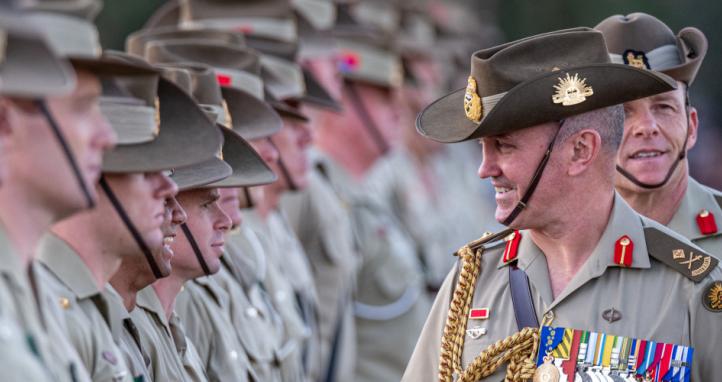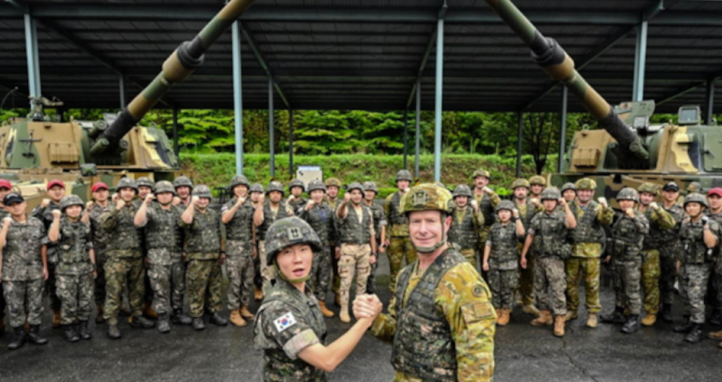Since we first pulled on the uniform, each of us have aspired to continually improve as military leaders, and we in the profession of arms often default back to military histories for relevant examples on leadership. You cannot walk into a commander’s office without tripping over biographies, battle recounts and revisionist histories all telling tales of how great military leaders came to prominence, did their duty and commanded their soldiers. Through their experiences we seek to unclutter the meaning of command and leadership, to pierce through the fog of war and find clarity in our own roles. When seeking further understanding of the art of leadership it is the journey, not the end point, that matters. For this very reason, delving into the journeys of explorers and those who have found themselves in the unknown should be considered as a useful adjunct for aspiring military commanders to better understand leadership in those contexts, broadening our scope beyond Clausewitz and Sun Tzu.
Explorers are a rich group of men and women who exhibit many of the leadership qualities and attributes we admire in military commanders, but are often overlooked. Like good military organisations, they carefully form and prepare their teams, meticulously plan activities and lead their people through extreme adversity to achieve a common goal. All explorers ply their trade in a world of passion, chance and reason but only the very best explorers 'get' vision, purpose, method and endstate. History illustrates that successful explorers rely upon positive leadership attributes and qualities to maintain team cohesion under the most trying conditions, much like successful military commanders do. Their careful preparation, care for equipment and detailed consideration of logistics are instantly recognisable as attributes successful military commanders readily demonstrate. Norwegian explorer Roald Amundsen, the first person to reach the South Pole on 14 December 1911, epitomises these qualities. He carefully selected his team, ensuring they were united towards a simple, common goal. His experiences in previous polar expeditions taught him the stark realities of leadership in the most inhospitable environments. He was receptive to others in selecting equipment and stores for his journey, drawing heavily from the collective wisdom of the native peoples of Greenland and Northern Canada.[1] The lessons learnt from these experiences coupled with his planning enabled Amundsen and his team to adequately prepare, equip, and survive the arduous journey to the South Pole.

Image 1/ Roald Amundsen and his crew looking at the Norwegian flag at the South Pole, 1911
At the other end of the scale, history is littered with examples of failure; explorers who have led with toxicity, and failed to invest time and effort towards understanding their people, their equipment, the environment and the need for thorough planning. Often they substituted planning and preparation with unnecessary risk-taking behaviour, humility with ego, and ignored all reasonable indicators and warnings, stubbornly continuing on to reach their endstate–often with fatal consequences. Although some have achieved success it has not been without what we might consider an unacceptable human cost, not to mention significant reputational or material cost. Englishman Robert F Scott was held up after his death in 1912 as a model of British heroism and as a gallant leader of men in his race against Amundsen to the South Pole. As time has gone on, history paints a very different picture to that in the immediate aftermath of Scott’s failed attempt. He is now remembered as much for his stubbornness and ineptitude as a leader as for his stoicism in the face of death. His unwillingness to adapt his plans to suit environmental conditions, his over-reliance on untested technologies and disdain for non-European solutions to survival in polar regions all impacted heavily on his expedition. His confident and cultivated public image masked poor planning and stilted relationships with his party that ultimately contributed to the failure of his expedition, a race that cost the lives of five people, including his own.[2]
Exploration is not always about finding what exists where ‘here be monsters’ is marked on the map. Those who have explored the human condition, our capacity to endure and thrive in adverse situations, also provide great examples of natural leadership and resilience. More akin to ‘discovery’ than ‘exploration’, their experiences offer us useful grounds to consider leadership in adversity. A great example is the story of Private Wiebbe Hayes, a Dutch soldier who amongst others on 3 June 1629, found himself shipwrecked on the Abrolhos Islands off the coast of West Australia when the Dutch East India Company merchantman, the Batavia, ran aground en-route to Batavia (modern Jakarta). In the days and weeks after the shipwreck, mutineers led by Jeronimus Cornelisz began a savage campaign of terror, murder and rape amongst the survivors that took the lives of 125 passengers and crew. Hayes showed tremendous leadership qualities and the presence of mind to care for the most vulnerable of survivors, establishing shelter, winning water and food on the nearby Wallabi Islands.[3] Through his leadership, the survivors thwarted hunger, thirst and the efforts of Cornelisz and his gang to kill them on four separate occasions before help arrived on 17 September 1629.[4]

Image 2 / Full sized replica of the Batavia merchant ship
As our understanding of leadership in adversity and the limits of resilience continues to evolve, explorers remain a relevant and useful medium for deepening our understanding of command and leadership. The ability of explorers to test the boundaries and be ambitious is inspirational, empowering leaders to reflect upon what may be in the realms of possibility in their own circumstances. Their experiences teach us about the boundaries of human resilience and when pushed to extremes, how far we truly can go. Their success helps us better understand the positive attributes of leadership and planning which we respect and admire; and their failure, like that in a military context, starkly outlines the cost of poor leadership, planning, logistics and willingness to respect the operational environment, particularly when the stakes are so incredibly high.
The positive values demonstrated by explorers remain not too dissimilar to those of our own Army values. Theirs is a story not of discovery or arriving at a destination, but of the learning undertaken during their journey. As a group of men and women who are known for their bravery, ambition and triumph over adversity, explorers seeking what lies over the horizon, or where the boundaries of human endurance lie, speak a language that those seeking to be better leaders in their military life can easily relate to.
Useful reads on exploration, resilience and leadership:
Scott and Amundsen: The Last Place on Earth by Roland Huntford (Available through the Defence Library Service (DLS))
The story of the race to the South Pole between Norwegian Roald Amundsen and Englishman Robert F Scott. Two men aiming to be the first to the South Pole with contrasting planning and leadership approaches.
Endurance by Alfred Lansing
The story of Ernest Shackleton’s unsuccessful 1914 attempt to cross the Antarctic Continent. His incredible journey to Elephant Island and across the Weddell Sea illustrate him to be a leader of incredible capacity, resilience, tenacity and courage.
Islands of Angry Ghosts by Hugh Edwards
Through meticulous research of historical records, journals and letters, Hugh Edwards explores the origins and events of one of Australia’s darkest and horrific maritime tragedies. In the aftermath of the wreck of the Dutch merchantman Batavia some 125 men, women and children were murdered by mutineers. This story outlines the incredible tale of survival and how 300 years later, their ship was rediscovered.
Touching the Void by Joe Simpson (Available through the DLS)
The story of Joe Simpson and Simon Yates’ near disastrous climb of the 6344m Siula Grande Mountain in the Peruvian Andes in 1985. With weather and light deteriorating on the decent, Simpson falls and breaks his leg. Inadvertently lowering Simpson off an ice cliff; with no means to recover his friend, Yates is forced to do the unthinkable and cut the rope his injured friend is dangling from to save his own life. Theirs is a story of remarkable resilience and decision making under the most trying of circumstances.




